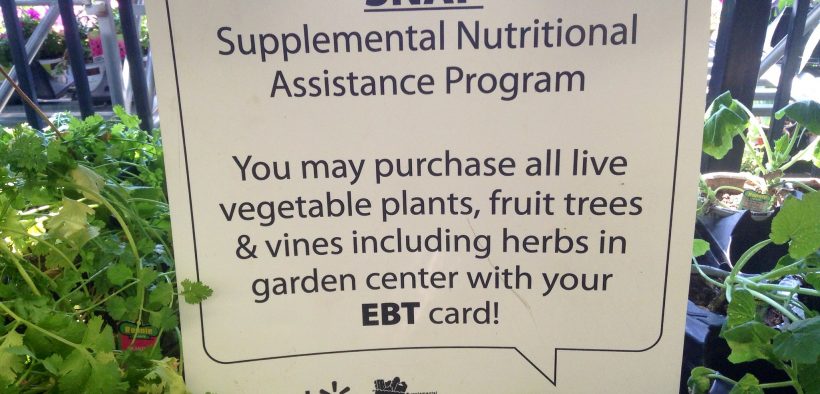What Do the USDA’s SNAP Rule Changes Mean for Food Insecure Americans?

The USDA is framing changes to federal food assistance as a return to the original intent of the SNAP program and preventing dependency on government assistance.
On December 4 the United States Department of Agriculture (USDA) announced changes to the work requirement rules for the Supplemental Nutrition Assistance Program (SNAP), formerly called food stamps. The changes will go into effect in April and will make it harder for certain people to access SNAP benefits. The December 4 announcement is one of multiple recent proposed changes to the SNAP program that would scale back the program and decrease the number of recipients.
Exactly how many people will be impacted in each state after the switch is now being estimated, nationwide almost 700,000 could lose SNAP benefits. On December 13, Sonny Perdue the Secretary of the Department of Agriculture spoke on Fox News and characterized the change as, “going back to the original concept, really the law that’s still on the books.”
A USDA press release echoed Perdue’s comments by describing the proposed changes as restoring the original intent of the program but added “A Second Chance, Not a Way of Life” to the press release’s title.
“Americans are generous people who believe it is their responsibility to help their fellow citizens when they encounter a difficult stretch. Government can be a powerful force for good, but government dependency has never been the American dream. We need to encourage people by giving them a helping hand but not allowing it to become an indefinitely giving hand,” said Perdue in the USDA press release. “Now, in the midst of the strongest economy in a generation, we need everyone who can work, to work. This rule lays the groundwork for the expectation that able-bodied Americans re-enter the workforce where there are currently more job openings than people to fill them.”
What is SNAP?
In order to be eligible to receive SNAP benefits a person must meet several requirements. For people who are adults but not elderly, not disabled, not pregnant, and do not have any dependents the initial time limit for benefits is three months. In order to get benefits past that there are requirements that beneficiaries spend 20 hours a week working or in training programs.
These requirements have existed since SNAP was created in 1996. However, up to now, states have had broad leeway to grant waivers for the requirements and allow beneficiaries to still receive SNAP if they are not working or training after three months. Some reasons for waivers include applicants living in areas with few available jobs or lack of spaces in training programs. The new rules will set tighter limits on the requirements states need to meet in order to grant waivers. Overall SNAP is considered a very low-cost high benefit government program, so the tendency has been to err on the side or providing the benefit rather than withholding it.
What Do the SNAP Changes Mean?
According to the USDA, over 11% of U.S. households faced food insecurity in 2018, the most recent data available. By making sure that people have access to food the program doesn’t just prevent hunger it also allows people to spend their money on things like housing, transportation, and childcare which can be essential components to not falling deeper into poverty. Because the benefits are used at grocery stores and other food retailers it also circulates money in the communities where food-insecure lower-income beneficiaries use it and can help provide jobs in those areas.
At less than $70 billion a year to help 40 million Americans, SNAP is also relatively cheap for a government program, compared to $5.3 billion that will be spent on two new airplanes for the President in 2020. However, as a social welfare program SNAP is seen by some as an easy way to cut government spending, the new rules are estimated to save the Federal Government $5.5 billion over the next five years.
The USDA’s eligibility rule change was originally proposed as language in a Republican-backed version of the 2018 Farm Bill. However, that version failed to pass. As a rule change, the new regulations did not go through Congress but the USDA had to have an open public comment period on the new requirements. Just over 19,000 comments were submitted, the majority of which were in opposition to the change. Those opposed to the change included anti-hunger advocacy groups which are concerned about how the change will impact food insecure Americans who will no longer be eligible.
The comments period for the administration’s next proposed change to SNAP closed this October and drew 170,000 comments. That change would make it so people who receive certain other government benefits are no longer “categorically eligible” for SNAP. This would likely cut another 3 million recipients from SNAP and make it so almost 1 million American children no longer automatically get free school lunch.







